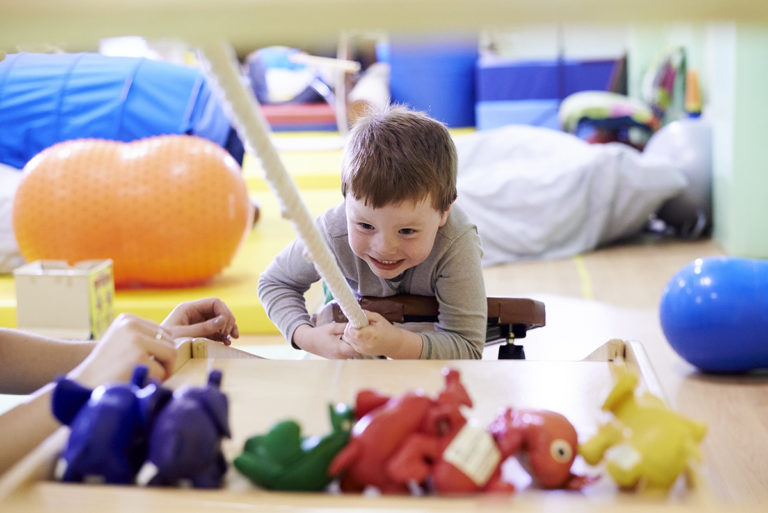Like almost all neuro-developmental conditions, Sensory Processing Disorders (SPD) are idiopathic. That is to say that the underlying cause for the condition is nearly always unascertainable. That said, many medical researchers believe that the pathogenesis of sensory processing disorder is primarily multi-factorial -- a combination of dietary, congenital and environmental factors.
Other threat elements that are also implicated in the development of sensory processing disorder are low socio-economic conditions and dealing with a single parent.
How is Sensory Processing Disorder diagnosed in children?
The essential symptoms of SPD vary in seriousness and presentation in different kids. It is recommended that parents keep track of any symptoms manifested by their child at home or school to devise practical methods and to discuss with the occupational therapist.
Common symptoms manifested by most children is a strange reaction to noise, crowd, strong smells and variations in temperature levels. All the sensory, visual and tactile stimulations substantially modify the response, thinking and action of a child which interferes with their daily activities.
Kids with SPD frequently deals with difficulties during potty training, getting dressed and other small motor skills. They may also display repeated habits like crashing or bumping into things and objects as well as problems interacting with other children of the same age group. As a result, frustration and anger issues are typically displayed by a child due to difficulties with sensory perception. Unfortunately, this often results in the child developing low self-esteem and anxiety with school and social interactions.
So what can be done about it?
Just like how speech therapy for children can mitigate problems with speech development if started at an early age, the debilitating effects of PSD can be averted or at the very least, adequately managed if treated early. Preferably, it is recommended to speak with a physical therapist for an action sensible and schematic technique.
Occupational therapy is needed to support typical childhood development and to help kids manage daily activities like eating and playing. The latter can also help kids afflicted with SPD connect and build meaningful relationships with family and friend.
What exactly does an occupational therapist do to help a child with SPD?
Experts in occupational therapy for children can devise practical and sensible goals for a child struggling with SPD. For instance, occupational therapist promotes the execution of necessary activities like teaching how to attach buttons, initiating and promoting play that helps develop their excellent motor skills.
Occupational therapists can likewise help parents form a beneficial routine for their child. That way, they can continue with therapy at home where it is less likely for a child to feel uncomfortable. This also builds up their confidence in the process.
Occupational therapists likewise initiate sensory exercises (that includes intro of certain activities that promote a sensory system of kids). This consists of the active participation of the family as well as that of teachers and friends.
Occupational therapists deal with kids to promote sensory advancement in a structured and organized environment (also described as a sensory gym) that is designed to encourage the brain of the child regularly. Children are kept stimulated through videos and activities that they will find exciting and engaging.






